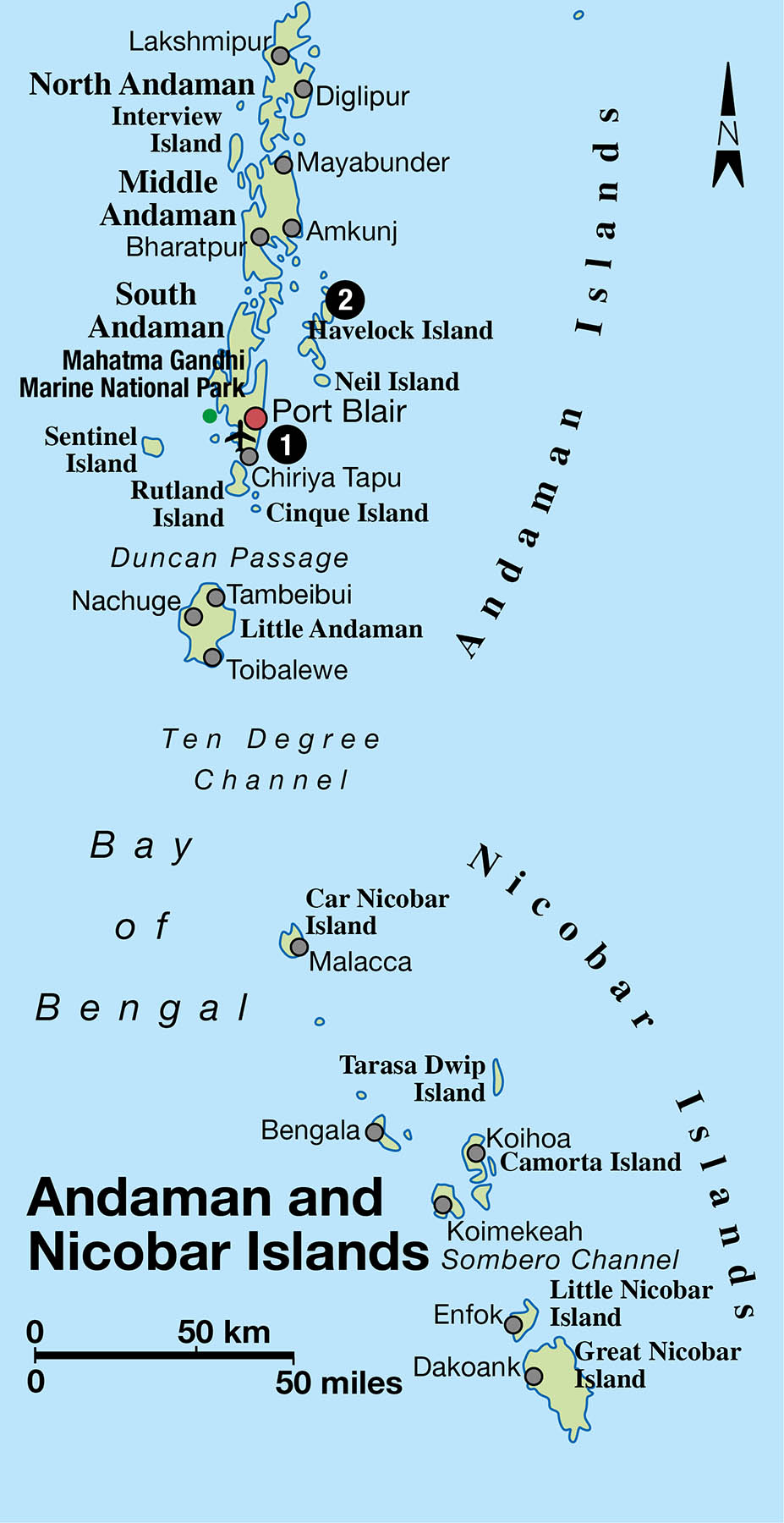The myriad small islands which make up the Lakshadweep and Andaman archipelagos are remote, entrancingly beautiful and way off the beaten tourist trail. Anyone seeking the quintessential white-sand, palm-fringed, turquoise-watered tropical beach experience – without the tourist crowds – will not be disappointed. Some parts of all the Andaman and Nicobar Islands are off limits to tourists to protect indigenous tribes, but the rest of the islands are available to tourists if they obtain a Restricted Area Permit.
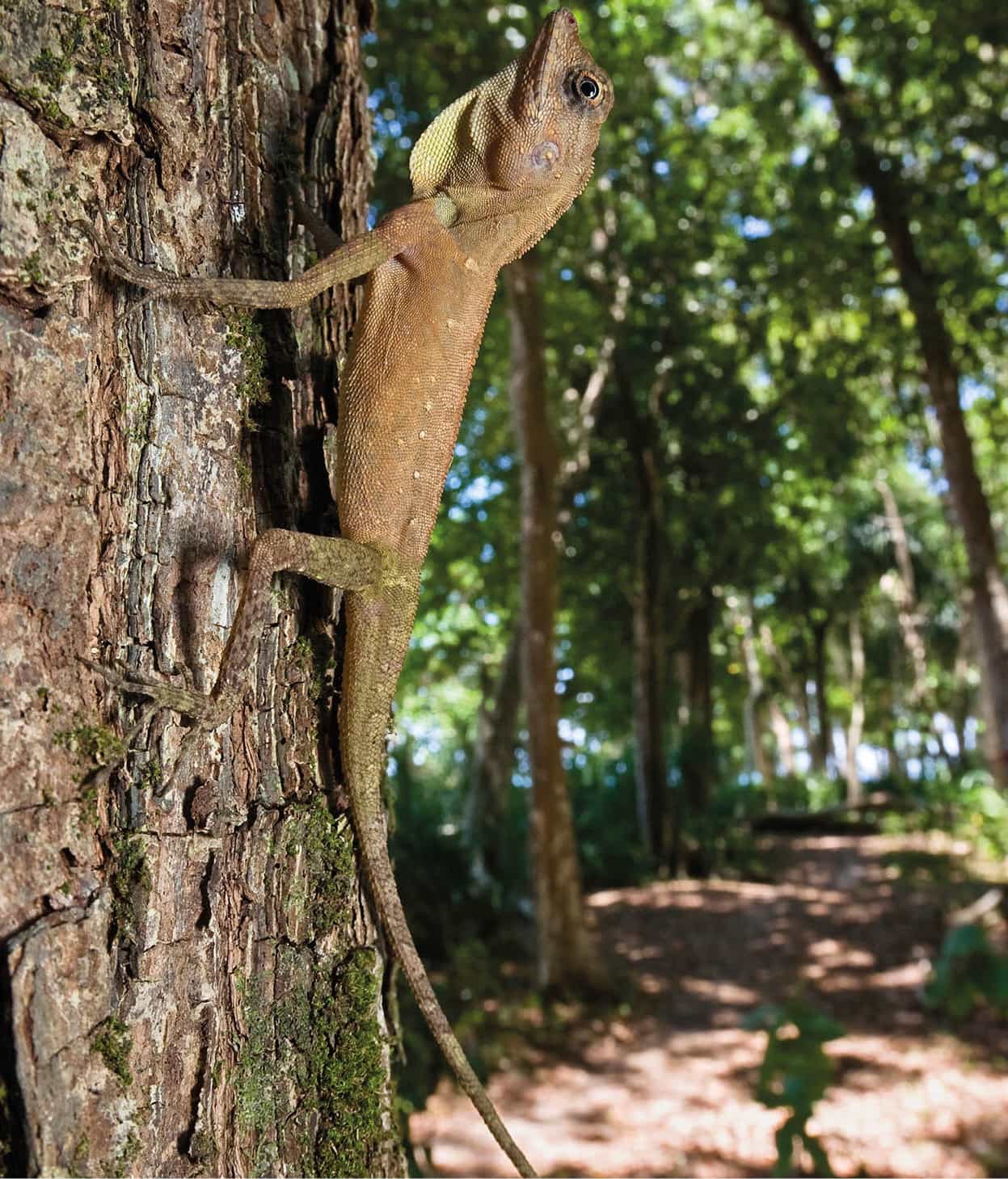
Tree dragon, Andaman Islands.
FLPA
Scattered some 200–400km (124–248 miles) west of the Keralan coast are the Lakshadweep Islands. Some speculate that the name derives from the estimates of early sailors, who imagined at least 100,000 (one lakh) of these coral islands and atolls. In fact, there are only 22 (depending on how they are counted), of which just 11 are inhabited by some 65,000 people. The group is a continuation of the Maldives, and the small islands are similarly characterised by beautiful white-sand beaches fringed with palm trees and translucent lagoons; the islanders of Minicoy, further to the south than the main group, have a great deal in common culturally with the Maldives.
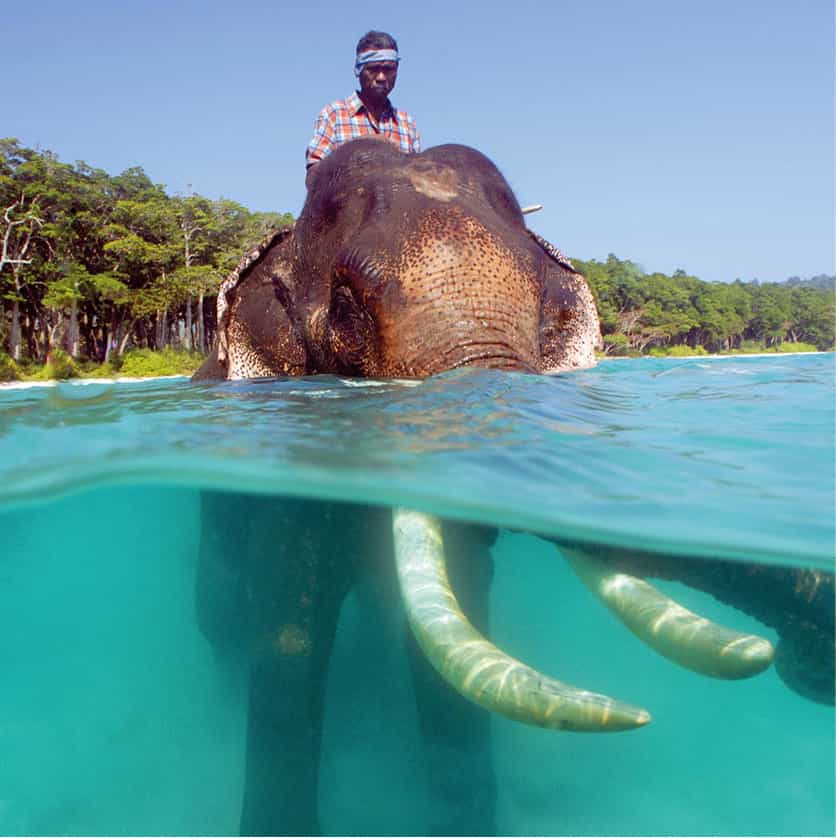
An Indian bull elephant cooling off, Havelock Island.
Getty Images
From the 13th century, the islands were ruled by the rajas of the Keralan kingdom of Kannur, and a large proportion of the population are descendants of the settlers who came here from that part of Kerala. To the Portuguese and other European mariners, these were the Laccadive Islands. They were under British control from 1877 until Independence.
The climate is tropical throughout the year, with daytime maximum temperatures ranging from 32° to 35°C (90° to 95°F). The southwest monsoon arrives in May and it rains, on and off, until the end of September. During this period, the islands are harder to reach, and transit between islands may have to be by helicopter as the sea can become extremely rough.
Being largely of Keralan descent, the islanders were originally Hindu, as the prevalent systems of caste and of matrilineal inheritance bear out. However, most converted to Sunni Islam, which had been established on the islands from as early as the 7th century. Today the vast majority of islanders are Muslims. The people speak a dialect of Malayalam, the only exception being Minicoy island, where Mahl (the language of the Maldives) is spoken. Coconut farming and fishing are the main occupations, along with some dairy and poultry farming.
These are some of the few unspoilt coral islands left in the Indian Ocean, and they have an exceptionally sensitive environment. Tourism by non-Indian nationals is officially restricted to the islands of Bangaram and Kadmat. It may, at times, also be possible to stay at the tourist resort close to the airport on Agatti. Transfer from Agatti to Bangaram and Kadmat is by boat.
Transport to and from Lakshadweep
As access to the Lakshadweep islands is controlled and limited by the Indian government, foreign tourists must book through one of two tour operators. The only airport is at Agatti, from where onward travel is by helicopter or boat.
For Bangaram Island Resort, contact CGH Earth (previously the Casino Group), tel: 00 91-484 426 1711, www.cghearth.com; for Kadmat, contact Lacadives, tel: 00 91-222 640 0434, www.lacadives.com. Both operators offer PADI-registered diving packages for all abilities.
Air India’s subsidiary, Alliance Air, operates six flights weekly between Agatti and Kochi, Bengaluru and Chennai. The other option is to take the ship from Kochi (see https://lakshadweep.gov.in for details of tours and latest schedules), stopping off at several islands en route. Journey time is between 14 and 20 hours.
Around the islands
The capital of the island chain is Kavaratti 1 [map], headquarters of the administration of Lakshadweep and home to around 11,000 people. The Ujra Mosque here has an ornately carved ceiling, said to be made of driftwood. Kalpeni, to the southeast, has a spectacular lagoon containing three uninhabited islands, Tilakkam, Pitti and Cheriyam; Kalpeni has been developed for internal tourism and has watersports facilities and tourist huts. Evidence can still be seen of a huge storm that devastated the island in 1847. The southernmost island is Minicoy. The predominant industry here is tuna fishing and canning. There is also a 50-metre (165ft) lighthouse built by the British in the 19th century.
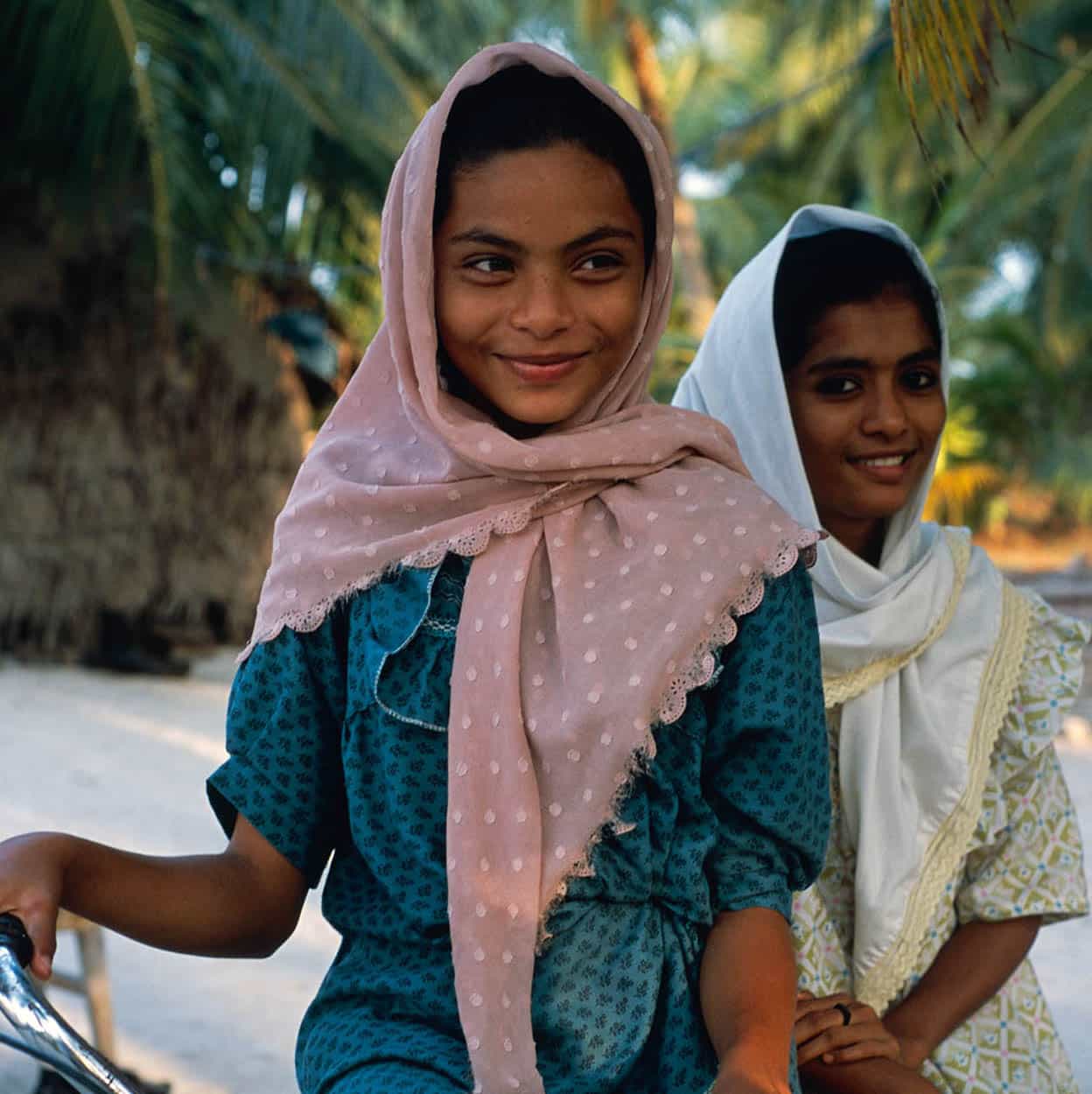
The vast majority of islanders are Muslim.
Alamy
The three islands likely to be of most interest to foreign tourists are Agatti and its minuscule neighbour Bangaram, northwest of Kavaratti, and Kadmat further to the northeast.
Agatti 2 [map], on the edge of a stunning lagoon, is the location of the only airport in the island chain. A 20-seater Alliance Air plane connects with Kochi,with other flights to Bengaluru and Chennai. Visitors who are heading to Bangaram either take a helicopter or embark on a two-hour boat ride. Bangaram 3 [map] is uninhabited apart from its resort complex, and is also situated on a beautiful clear lagoon. Kadmat 4 [map], usually reached by helicopter, has small-scale tourist development and a breathtaking beach with superb diving.
The marine life on the reefs and within the lagoons is impressive. As well as a huge variety of corals, there are over 1,000 species of fish, including butterflyfish, clownfish, wrasses, parrotfish, goatfish and lionfish. Among the more spectacular sights are the turtles, harmless sharks and manta rays, and visitors may also encounter dolphins in the lagoons.
Glass-bottomed boats, snorkels or scuba gear are available for close-up encounters, and the resorts offer scuba and snorkel training. If you are planning on diving you will need a certificate of health from your doctor.
Andaman Islands transport
Flights: Port Blair’s Veer Savarkar International Airport is connected to Bengaluru, Chennai, Delhi and Kolkata, by direct daily flights.
By sea: It takes between three and five days to travel from Kolkata (departures once per fortnight) and Vishakapatnam (monthly); conditions on board the poorly maintained government vessels are often extremely uncomfortable, the food poor and sanitation less than ideal.
Within the islands, government ferries run from Port Blair to Havelock Island (2–3 daily; 2hrs–2hrs 45min); Little Andaman (5 weekly; 8–12hrs); Long Island (4 weekly; 7hrs); Neil Island (1–2 daily; 3hrs); Rangat Bay (1 daily; 8hrs). There is also a private catamaran service between Port Blair and Havelock which leaves Port Blair at 8.30am and returns at 4pm; see www.makruzz.com for details.
The Andaman and Nicobar Islands
The Andaman and Nicobar Islands lie 1,220km (760 miles) southeast of Kolkata across the Bay of Bengal, or ‘Kala Pani’ (Black Water), as this cyclone-prone sea was traditionally known. Their existence was reported in the 9th century AD by Arab merchants sailing towards the Straits of Sumatra, but with dense forests, mangrove swamps and shark-infested seas, the 572 islands were considered fit only for political prisoners and Malay pirates. Their development as a tourist destination, attracting scuba-divers, birdwatchers and honeymooners, has happened only in the past three decades. Most of the islands, however, are Adivasi (tribal) reserves and only a limited number are open to visitors – and the Nicobar group remains off-limits. The best time to visit is from December to April.

Fishermen inspect their catch on the Andaman Islands.
Getty Images
The aboriginal inhabitants of the Andamans, comprising several independent tribes known collectively as the Andamese, are among the most isolated peoples on earth. The exact date of their arrival on the islands is not known, but is thought to have been at least 60,000 years ago, and in all likelihood formed part of the large-scale migration of humans from Africa to Asia, which began some 100,000 years ago. From that time until the arrival of the British in 1789, they lived in complete isolation, with no contact with the outside world or even each other – they lived so separately that they don’t understand each other’s languages.
The largest group on Little Andaman are the Onges. They are hunter-gatherers, who collect honey and spear fish, and ritually paint their bodies with clay. The Sentinelese are an elusive group of around 200 people, who have been known to fight off intruders with poisoned arrows. In 2018 they killed a US missionary who had paid local fishermen to take him to the island. They adorn themselves with body paint, beads and bone. The Jarawa, with a population of 240, have a large reserve on South Andaman.
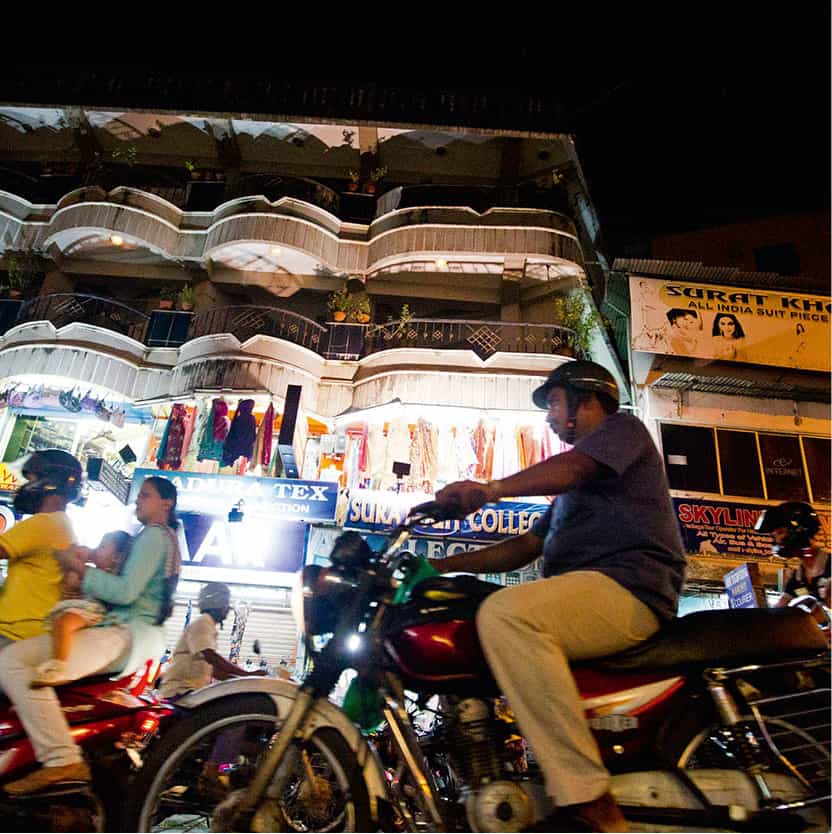
Traffic moves along a street in Port Blair.
Getty Images
The first Westerners to set foot on the islands were the Danes, who established a settlement in the Nicobars, but left in 1768 due to poor health conditions. The British Indian government annexed both groups of islands in 1872 and built a prison at Port Blair for prisoners serving life terms. The jail was used mainly for political prisoners engaged in the Independence struggle, and it was in Port Blair, while under Japanese occupation during World War II, that the Indian flag was first raised.
The arrival of the British saw many of the indigenous people perish through disease, alcoholism and, according to some sources, deliberate attempts to wipe them out. There were approximately 5,000 Andamese when the British arrived, but this number had fallen to just 600 by 1901. Throughout the 20th century, the tribes were known for their fierce attempts to maintain independence; a European anthropological party that attempted to land on one of the islands in the 1970s was repelled by a flurry of arrows. They left gifts of modern appliances, including metal buckets and spades, only to find that upon their return some time later they were subjected to the same aerial bombardment; only this time the arrows had metal tips.
The Jarawa tribe, who live closest to Port Blair, began to initiate contact with the settled population in 1997, and have slowly increased their interaction with the capital – some Jarawan children are now attending schools outside their reserve. The building of the Great Andaman Trunk Road in the 1970s, which runs straight through the Jarawa reserve, has had a huge impact on the lives of this tribe, including several outbreaks of common diseases such as measles. In reaction to this, a law was passed to try to protect the Jarawa from such contact, and from the widespread encroachment on their land. All visits to Jarawa territory are forbidden by government law, a law unfortunately flouted by government travel agencies, which take Indian tourists to visit the Jarawa on a daily basis.
On 26 December 2004 the islands were hit by the enormous tsunami that also devastated parts of Southeast Asia. The damage was overwhelming, particularly in the Nicobars and on Little Andaman. More than 3,000 are officially listed as having been killed, and thousands more displaced, but the main areas visited by tourists, including Port Blair and Havelock, although affected by the earthquake, were protected from the tsunami itself.
Tip
A permit is required by all foreign travellers to the Andaman and Nicobar Islands. These are issued on arrival and are valid for 30 days (extendable to 45 days), allowing travel and overnight stays to a strictly designated list of destinations in the archipelago. Permits and passports are checked on disembarkation at all islands.
Port Blair 1 [map], on the island of South Andaman, is the capital and only sizeable town (population 108,000) in the archipelago. It was named after Lt Reginald Blair, who conducted a survey of the area in 1789. The British, however, only gained control over the Andamans after 1857, and used this outpost of empire as a penal colony right through to 1947.
The Cellular Jail, where 400 freedom fighters were held during the struggle for Independence, is now a museum (daily 9am–12.30pm, 1.30–4.45pm, sound and light shows in English Mon, Wed, Fri at 8pm). There is also an Anthropological Museum (Tue–Sun 9am–1pm, 1.30–4.30pm), which has mini-reproductions of villages of local peoples. Across the harbour is Viper Island, where executions used to take place, and Ross Island, guarded by World War II Japanese bunkers, and now a peaceful spot grazed by numerous chital deer.
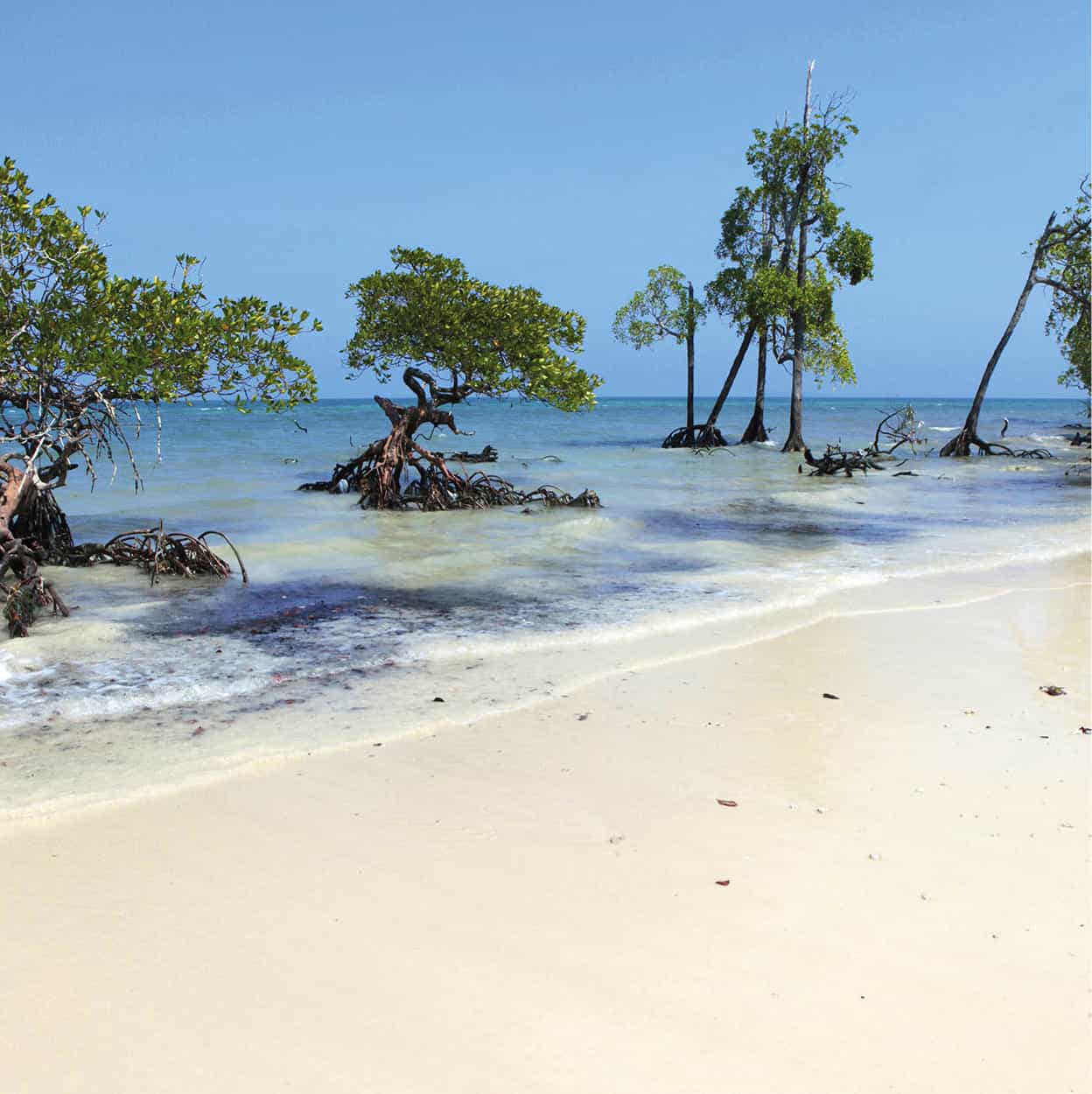
Mangrove trees grow on a beach on North Passage Island, Andaman Islands.
Getty Images
Around one hour south from Port Blair (there are four daily buses), Chiriya Tapu has a beautiful beach and some good snorkelling. For truly spectacular snorkelling and scuba-diving, the village of Wandoor is the gateway to the Mahatma Gandhi Marine National Park: it is likely you will have to sign up for a tour in Port Blair. If you want to experience the pristine tropical forest, Mount Harriet has some superb walking trails: take the ferry from Port Blair to Hope Town, from where the starting point is a short bus ride. Alternatively, it is easy to hire a scooter, but extreme caution is advised on the unpredictable roads.
Tip
If you are staying on the east coast of Havelock Island, away from the main market, finding a rickshaw to take you anywhere can be tricky – consider hiring a scooter; rates are reasonable, there is very little traffic and the roads are generally well surfaced.
Elsewhere in the Andamans
Havelock Island 2 [map], around 2.5 hours by boat to the northeast of Port Blair, has an abundance of fabulous beaches, and is the main focus of tourism in the archipelago. Unsurprisingly given its location much closer to Thailand than India, Havelock is reminiscent of many of the Thai islands, not just in its physical beauty but also in the way that tourism seems poised to take off – think Koh Samui in the mid-1990s. There is still a very relaxed feel to the place, with the majority of the island still uncultivated jungle – the drive from the west to east coasts is spectacular. The choice and range of accommodation is expanding every year, and the diving is superb, with costs amongst the lowest anywhere in the world, encompassing anything from one-off dives to officially recognised courses, right up to instructor level.
Tip
It’s worth remembering that although the Andamans are 1,000km (620 miles) east of the Indian mainland, they are still within the same time zone as the rest of the country. This means that sunrise and sunset are disconcertingly early – at around 5.30am and 5.30pm respectively, which makes for an early start to the day if you want to enjoy the fleeting cool hours of morning, and correspondingly long evenings.
The stunning sea life is not solely the preserve of the certified diver – snorkelling excursions are plentiful, and there’s even a glass-bottomed boat at Elephant Beach, one of the most popular snorkelling sites. Access is either via a 3km (2-mile) trek through the jungle or by boat – there are generally wooden longtail motorboats, known as dunghis, on most of the more popular beaches, with the owners open to offers for excursions around the island. Be warned, however, that these are noisy contraptions, and have very little stability at low speeds!
Although most of the accommodation is strung out along the east coast, between beaches No. 2 and No. 5, the shoreline here is not as enticing as on the west coast – the beaches are narrow, and the water shallow and rocky underfoot.
Make the trip to the west coast, though, and the stunning Radhanagar beach (or Beach No. 7) awaits you. Wide and long, with squeaky clean sand and pristine, aquamarine waters, this is a beach that bares comparison with the best in the world. The only downside to this paradise is the sandflies, but a liberal application of baby oil seems to stop the little critters grabbing hold and biting.
The famous sea-swimming elephant of the Barefoot Resort died in 2016 at the age of 66. However, there are still plenty of elephants at the Elephant Training Camp, on the east coast just south of Kalapathar village. Follow the sandy trail through the forest to reach the enclosure – again these elephants tend to be feeding in the forest by day, so early mornings or late evenings are the best times to visit. There are an increasing number of options for excursions from Havelock, some of which include overnight camping on other islands. Check out www.barefoot-andaman.com for more details.
Just to the south, Neil Island is quieter, but just as beautiful, with an increasing number of backpacker-type hotels, as well as snorkelling and diving sites every bit as good as on Havelock.
The large islands of Middle Andaman and North Andaman are further off the beaten track, covered in thick forests. Some tribal areas are off-limits. The island of Little Andaman, devastated by the 2004 tsunami, has rebuilt its small-scale settlements and has started to make a few tentative steps into the world of tourism, with package tours from Port Blair including elephant safaris to remote waterfall sites in the interior organized by the snappily titled Andaman and Nicobar Islands Forest Plantation Development Corporation Limited (ANIFPDCL).
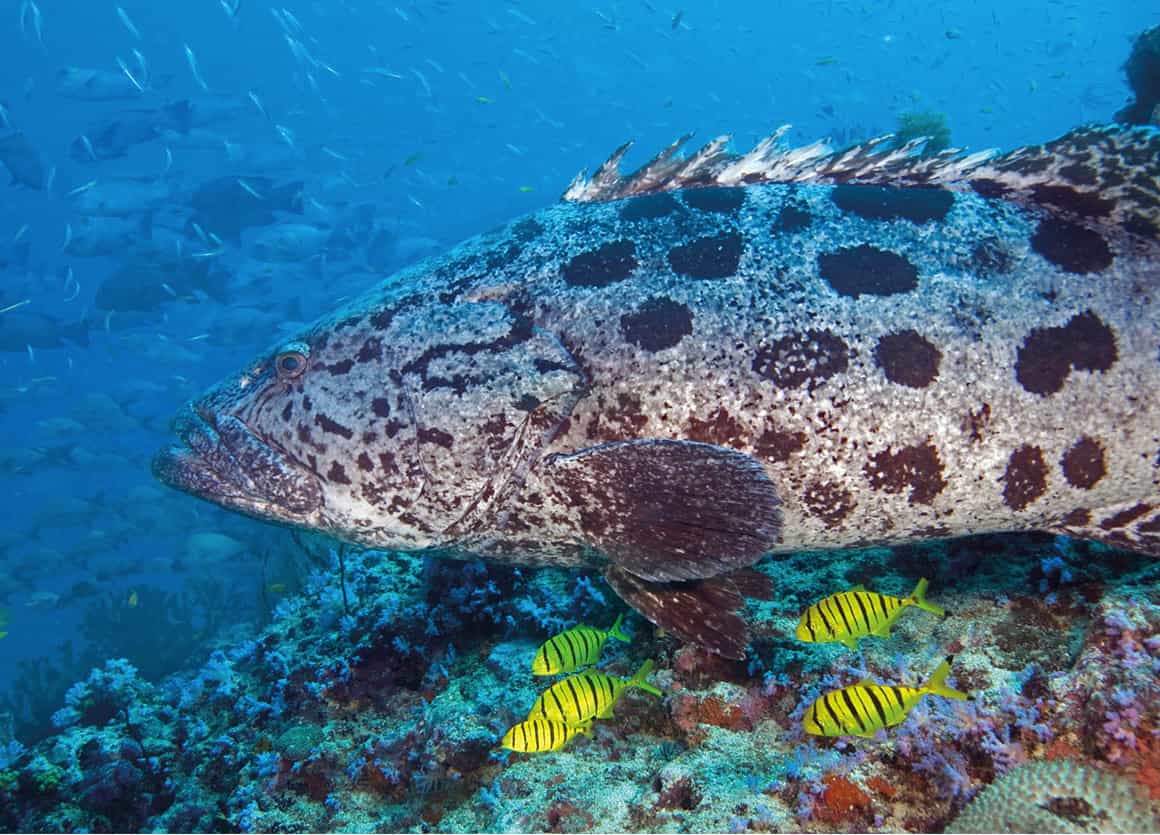
Fish off the coast of Havelock Island.
Getty Images

